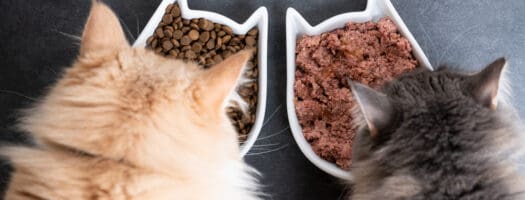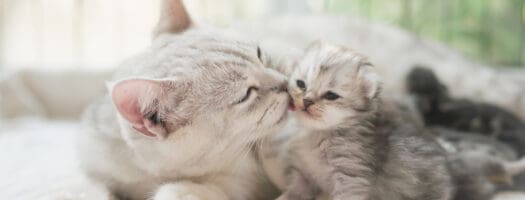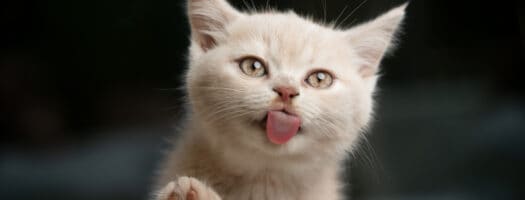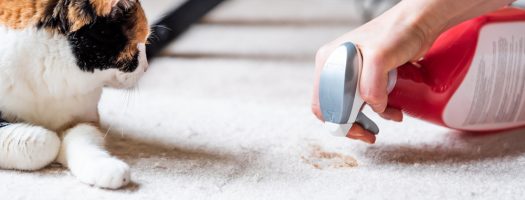How Much Dry Food Should I Feed My Cat?
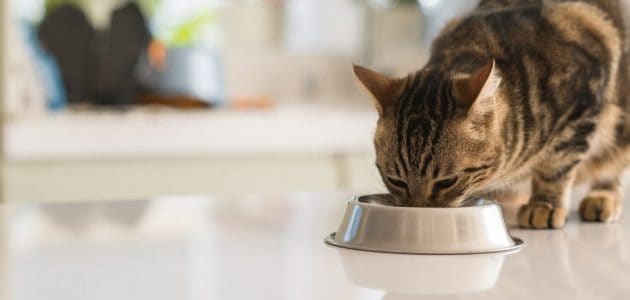
If you are a cat owner, one of your first questions will be how you can best feed your cat. As cats are well known to be picky eaters, you’ve probably tried to serve your benevolent feline overlords all kinds of food and had them go ham on wet food and human food, while they turn up their noses at dry food.
If you have your cats’ best interests in mind, you should think about whether your cats are satisfied with the kind of food you give them. You should also think about whether your cats are eating enough whether in terms of quantity or nutrition.
As long as your cat friend isn’t chowing down on lasagna like Garfield, there’s no cause for immediate alarm, but the long-term effects of eating too much or too little food can be harmful. So, it’s important to do research and get a professional opinion when finding what works for your kitties.
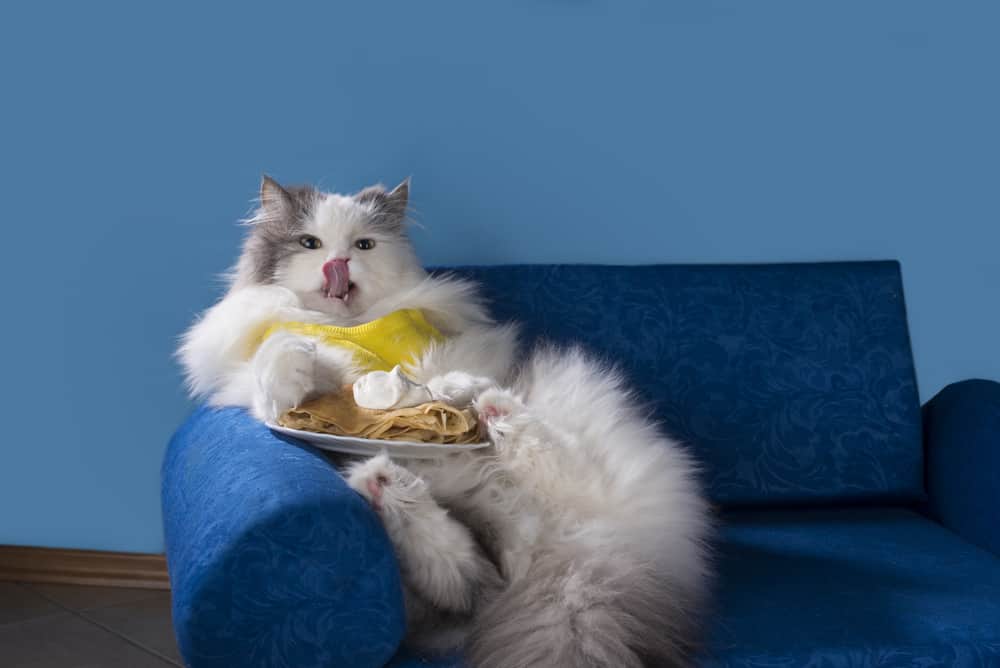
Most pet owners feed their furry companions dry food, but did you know there are many ways to mix it up to get your fur babies the optimum enrichment and nutrition they need? With these questions in mind, we bring you this guide to explore dry cat food and how to take care of your animal buddy’s diet.
How Much Should My Cat Eat?
First things first, it’s important to know how much food is the right amount of food to feed your furry friend. You’ll want to make sure you’re feeding your cat enough, so they have enough energy to do kitty things and keep them at a good weight.
Chubby chonk cats may be cute and funny, but it’s difficult for them to go about daily activities like jumping, playing and climbing. Cats are relatively small, so one extra pound on a cat is the equivalent of 15-20 extra pounds on a human. It makes a huge difference, and obesity in cats can cause health issues like diabetes.
Most healthy cats should weigh about ten pounds, but if your vet says your cat’s ideal weight is within a few pounds of this number, that’s totally normal. There are a lot of different factors that determine how much a cat can eat, but in general, the following benchmarks are a good starting point:
- An adult cat at a healthy weight should eat about 1 cup of dry food each day
- Kittens need about 1 and 1/3 cups per day
- Pregnant and nursing cats are eating for more than one, so they should be fed about 2 cups of food per day
- Overweight cats can have their diets safely reduced to about ¾ of a cup of dry food each day
How Much Food Does My Cat Actually Need?
First, think about how your feline friend’s daily activities might affect their energy levels. Vets recommend feeding cats 24 to 35 calories per pound of body weight, but this can vary wildly depending on how active your cat is. Kittens need more calories because they are growing and more active than older cats. It makes sense that they spend more time raising hell in the house, so they’ll need more fuel.
If your kitty likes to lounge and you’ve almost sat on her because you thought she was a part of the sofa, she’s probably going to need less in terms of daily calories compared to a high-energy ball of fluff that bounces off the walls. A senior cat will be more sedentary than a young adult cat, and hence, they will need to eat less. How will you know how much to feed a less active cat or an excitable outdoor cat, though?
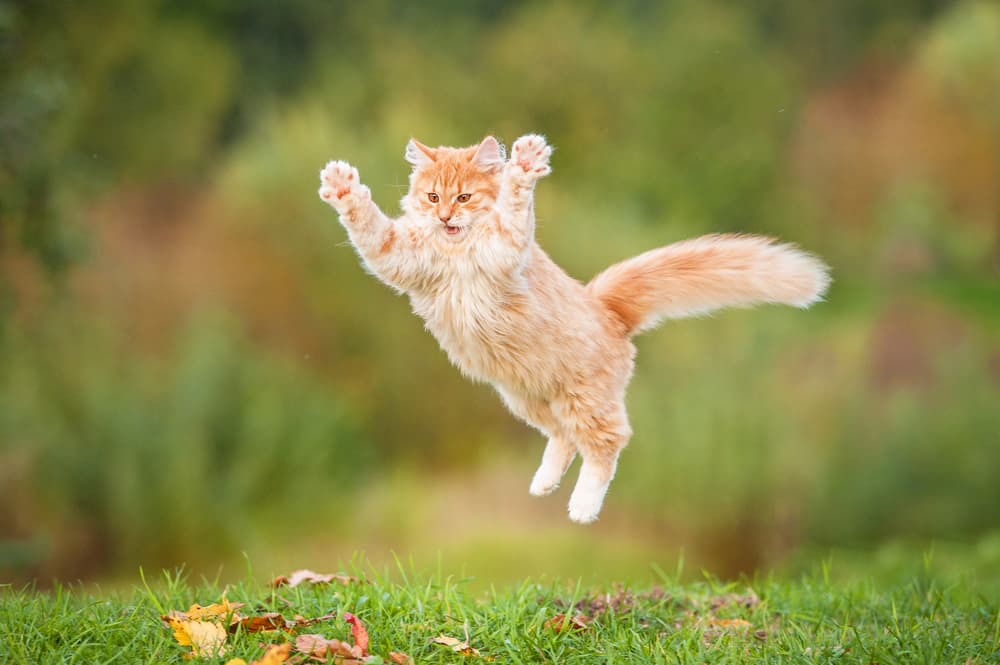
Check the Bag, but Keep the Cat Out of the Bag
Your package of cat food is on your side in solving this cat feeding mystery. It usually has a feeding guide that tells you how much to feed your cat based on age and weight. This tells you important information like ingredients, feeding instructions and serving information. The food package feeding guide is great on its own, but you should also consider other factors like your kitty’s size, physical condition and activity level. Your pet food company’s website might have more information on feeding guidelines including frequently asked questions.
Do Some Cats Need to Eat More Food?
Sometimes, your cat will have health and physical conditions that affect the amount of food they eat and the frequency of eating. For example, if your cat is pregnant or nursing, she will need more food than usual. If your cat has a health issue like diabetes, hyperthyroidism or bad teeth, you will have to adjust the feeding amount and timing to match what is recommended by your vet.
It helps to be able to check your furry friend’s body condition score and to pay attention to their hunger levels so you can adjust the amount of food you’re feeding them. A complete and balanced diet can go a long way to getting your cat off on the right paw in life.
What Kind of Food Should I Feed My Cat?
We talked about our cats’ requirements for food, now let’s talk about the food itself. What you feed your kitty is just as important as the amount you’re feeding them. When you’re looking at the cat food label, you can check the ingredients list and nutrition information to see if the food you’ve chosen is providing your cat with a balanced, high-quality diet.
Are There Any Restrictions for the Kind of Food I Can Feed My Cat?
Cats are obligate carnivores – they need taurine, an amino acid only found in animal-based protein. A vegan or vegetarian diet will not work for cats and can cause starvation or death. They are also lactose intolerant, so they cannot drink cow’s milk. If you feed your cat milk, it can cause vomiting and diarrhea.
Cats cannot taste sweets, so your cat food should not have any sugar – cat teeth are already bad enough as it is. Look at your cat food ingredients list to check whether the food has the right ingredients.
Should My Cat Also Eat Wet Food?
Wet cat food contains about 250 calories in a 6-oz can, while dry cat food is about 300 calories a cup. Here are some calculations – using these calorie counts as a guide, you can feed a 10-pound cat one full cup of dry food or 1 1/4 6-oz can of wet food a day. You can adjust the wet to dry food proportions according to your cat’s preference.
These calorie counts differ from brand to brand, so take note of it if you decide to change the type of food you’re feeding your cat. As a rule of thumb, high quality dry cat food is denser and contains more nutrition than low quality dry cat food. Your cat will need to eat less high-quality dry food to meet their nutritional needs as compared to low quality dry cat food. Remember to count cat treats as part of their daily calorie intake as well.
How Does the Proportion of Wet Food to Dry Food Affect My Cat?
In general, cats don’t drink much water. Wet cat food is about 70-80% water, so most vets will recommend a mix of dry and wet food to make sure your cat is hydrated. It is possible to feed your cat a dry-food-only diet if the food is of high quality, but you should encourage your cat to drink more water to make up for the difference in water content.
Though the exact proportion varies greatly, as a general rule of thumb you should reduce your cat’s dry food intake by about half a cup for each can of wet food that you give them.
How Often Should My Cat Eat?
Most cats can be fed once or twice a day unless they have a health issue that needs special accommodation. Cats love to graze on food when they feel like it, so you can also leave dry food out during the day as long as it’s correctly portioned. Some cat owners feed their cats with wet food twice a day and leave dry food out for their cats to graze on, while other cat owners top up their cat food dishes with only dry food twice a day. What’s important is to find out what works best for your fur baby.
Where Should I Feed My Cat?
Cats prefer to be able to see their surroundings while they eat, so they can have a clear view of any predators or rivals. They also prefer a shallow dish to eat from, so it doesn’t bother their whiskers. Feeding your cat with a flat dish out in the open will be much more comfortable than feeding them at a restrictive corner with a deep bowl.
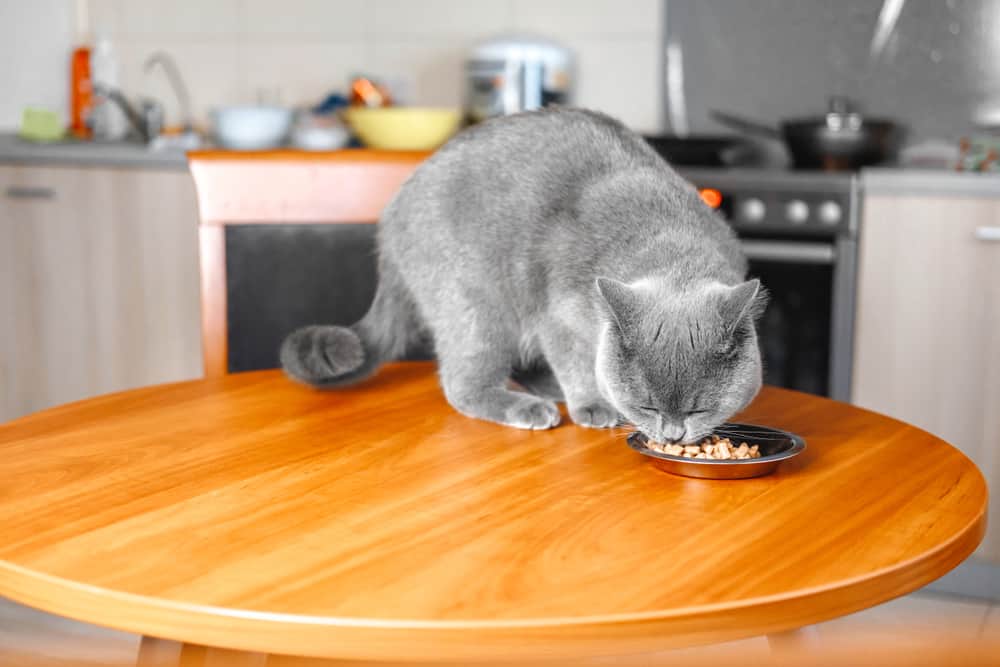
How Will I Know if I’m Doing It Right?
It’s natural to want to get things right the first time, but there’s no harm in trying again. Weighing your cat every week or so will help you find out whether your feeding regimen is working. If your cat is starting to look a little portly, you can adjust the amount you’re feeding them and monitor to see if it works. The same applies for if your cat becomes underweight or keeps begging for food because they’re hungry.
You can also feel your cat’s backbone and ribs to check if your cat is turning into a chonk or if it’s just fluff – you should be able to feel the ribs, but they should not be right beneath the skin. Your cat should also be able to go about daily activities like running, jumping and climbing with no problem. If you’re noticing signs that your cat is getting overweight, reduce their food intake until their weight goes back down.
Final Thoughts
Taking care to feed your cat the right food in the right amounts can help your cat stay happy and healthy. Your cat might not always be happy about the choices you make, especially when you don’t share the tasty human food, but you’ll know that the effort put into your furry companion’s balanced diet will pay off in the long run.
